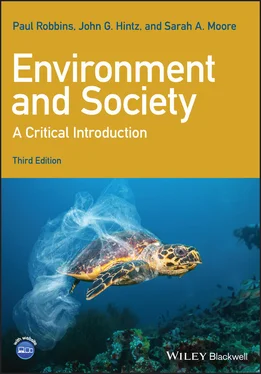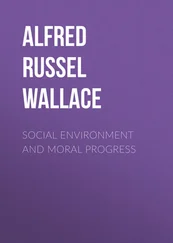Such systems are not without problems and limitations, obviously. No allowance here has been made for geography, for example. If individual factories are allowed to pollute on site, offsetting their emissions with reductions at faraway locations, the environmental effects might be locally disastrous, even if the overall reduction meets a target. The problems of actually setting the cap, determining the limits, and monitoring and implementing the reduction all remain as well. The use of the market tool also does nothing to depoliticize pollution control, since determining how much pollution is allowable requires difficult tradeoffs and regulatory experience.
In a variation upon this approach, some regulations allow markets to be extended to “banking” and “withdrawing” environmental services through third-party providers. Most notably, wetland protection in the United States has moved to a banking system. Here, a cap is set on the total amount of wetlands, enforcing no net loss of wetlands overall, but allowing that any local loss of wetlands can be offset by the creation of a wetland elsewhere, so long as it is approved by the EPA in terms of its delivery of similar “services.” A new big-box retail chain, for example, which destroys a wetland in the construction of a new store, is required under law to create a similar one somewhere else. Since building wetlands is a specialized practice, however, probably out of the technical and ecological capacity of the person or firm who destroyed the original ecosystem, a third party might be called upon to create and manage the new wetland. More radically, a savvy developer might build an enormous wetland or set of wetlands – a kind of bank – speculating that new constructions will need to purchase portions or shares in the future to meet their obligations.
Such a system presents any number of practical problems, which raise questions about the ecological efficacy of any such effort. In the case of wetlands, it is necessary, for example, to assure that newly built environments actually deliver the ecosystem services lost in the destruction of the original landscape. Such monitoring and oversight demand extensive regulatory efforts, many ecological experts on site examining the system, and careful scrutiny over time. Indeed, a market-based approach, often vaunted for its ability to cut out government intervention, may demand an extension of state regulations, with increasing numbers of state scientists and monitors, paid at the public expense, assuring the legitimacy of transactions in the market (Robertson 2006).
Market-based solutions to environmental problems also tend to stress the power of consumer demand for changing environmental conditions. Pointing to an overall social shift toward green values, market advocates suggest that the most powerful way to change production systems is to allow consumers to “vote with their money,” and select and purchase green products, often at a premium. The success of organic foods, which are now very much in the mainstream of consumer culture, provides an example of consumers paying extra and creating incentives for more producers to change their methods and technologies.
GreenwashingThe exaggerated or false marketing of a product, good, or service as environmentally friendly
Such approaches have drastic limitations. How does a consumer know, after all, the specific environmental impacts of products that carry handsome green labels? How do they know such products and companies have not been merely “ greenwashed,” presented and advertised heavily as environmentally sound or benign with little substantive change in actual production practices, packaging, or disposal? Indeed, for many firms far more time and money are invested in green advertising than green practices (TerraChoice Environmental Marketing Inc. 2007).
Green CertificationPrograms to certify commodities for the purposes of assuring their ecological credentials, such as organically grown vegetables or sustainably harvested wood products
One way of confirming truth in green advertising is through the process of green certification, in which a third party monitors production of a range of products and provides a confirmatory “seal of approval” for products meeting specific standards. A number of governmental and nongovernmental green certification systems exist, including those for timber, organic foods, and energy-efficient appliances, among many others. As green certification systems continue to proliferate, however, their reliability and consistency become more questionable. Some certifications, for example, are established by companies themselves rather than third-party observers. Moreover, many countries have adopted their own standards. For example, the country of Malaysia has instituted its own independent certification for sustainable timber, which competes directly with international standards. This makes global trade in eco-friendly goods a confusing smorgasbord.
Beyond Market Failure: Gaps between Nature and Economy
Leaving aside problems in implementing market-based environmental policy, larger questions loom. Adopting an economic logic for nature presents more basic problems: it makes it difficult to maintain ecocentric values (see Chapter 5), because there is a mismatch in the behavior of money and ecosystems, and because basic economic inequity presents a barrier for reconciling markets and the environment in a socially just way.
At bottom, the market response model can only be deemed to be operating successfully if success is measured in strictly economic terms. When sperm whale oil became scarce and was replaced with fossil fuels, as actually happened in the nineteenth century, the outcome for people was negligible or beneficial. New resources, propelled by the scarcity of old sources, were made available through the magic of the marketplace. But what is the lesson of this story for the sperm whale itself? Long before market responses “kicked in” to send humans in search of new oil sources, the sperm whale was driven to the brink of extinction, a result that was only forestalled by the creation of international bans on whaling in the twentieth century. Indeed, global green markets have proven slow to adjust to the decline of rainforests, the plunge in biodiversity, and the potential catastrophic implications of global warming, raising questions about the capacity of trade to capture the value of these things, at least within the urgent time frame in which they will need to be addressed.
The problem is therefore not simply that the market may fail on its own terms (and indeed it does by the admission of many of its most enthusiastic supporters), but that its success can only be judged in economic and therefore anthropocentric terms. If there are values that cannot be captured in a market, like the evolutionary, aesthetic, or moral “value” of a species, what difference does it make that its depletion eventually allows its substitution by something else? While economic valuation allows us to identify what people might be willing to pay for abstract and intangible goods and services (i.e. the presence of sperm whales somewhere on the planet), it does not necessarily point a way for them to be valued, in monetary terms.
Beyond this, the valuing of ecological conditions through the market, and specifically in money terms, is fraught with other very basic problems. First, the history of capitalism has shown that markets are highly volatile, and given to bubbles and busts. This is not necessarily a bad thing for capital, which travels from crisis to crisis, moving from investments in forestry to plastics to biofuels. But these rapid fluctuations of money values of different natural objects, typically driven by speculation, may be out of step with both cycles of environmental systems and changes in social values. Without recourse to some other system of valuation, however, these eruptive metrics are the sole measure in a market. As geographer David Harvey describes, this becomes “a tautology in which achieved prices become the only indicators we have of the money value of assets whose independent values we are seeking to determine. Rapid shifts in market prices imply equally rapid shifts in asset values” (Harvey 1996, p. 152). But the crashes and crescendos of historical markets continuously show that market volatility may not reflect the social values they are understood to measure. Can we trust a turbulent commodity exchange market to reflect the slow and steady pace of changing environmental values?
Читать дальше











